Targeted Protein Degraders (TPDs) comprise a class of small molecules that induce protein degradation of a specific disease-causing protein by exploiting cellular endogenous ubiquitin-proteasome and autophagy–lysosome pathway system. In recent years, various molecule classes have evolved, including PROTACs (Proteolysis-targeting Chimeras), molecular glue, CHAMP (Chaperone-mediated Protein Degradation/Degrader), LYTAC (Lysosome-targeting Chimeras), to name a few.
PROTACs and other TPDs offer a fast and reversible chemical knock-down approach to control protein function. The impact of TPDs has changed the landscape of drug innovation. TPDs are emerging as a new therapeutic method to treat diseases such as cancer, inflammation or neurodegenerative disorders caused by the aberrant expression of a pathogenic protein. While traditional drugs can target only around 20% of the proteome, this new technology could reach the remaining 80% which is currently undruggable in terms of conventional methods, such as inhibitors and agonist/antagonists.
TPD discovery technology platforms at PicoImmune laboratories covers a variety of target protein ligands. In addition, PicoImmune has established as well as improved the TPD biological screening and testing platforms throughout the pre-clinical stages.
PicoImmune is confident in providing efficient, cost-effective, and professional services to support our clients to successfully reach their drug development milestones.
Assay Platforms and Services
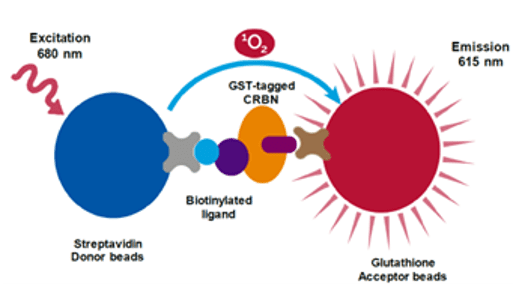
- Traditional Western Blot (SDS-PAGE based, Li-COR Imaging)
- Quantitative Simple Western to Quantify Degradation of Any Protein
- In-Cell Western to Quantify Degradation of Any Protein
- AlphaLISA or HTRF Human CRBN Binding Assay
- AlphaLISA or HTRF Human VHL Binding Assay
- HTRF xIAP BIR3 Binding Assay
- HTRF MDM2 Binding Assay
- HTRF cIAP1 Binding Assay
- Live Cell NanoBRET Target Engagement Intracellular E3 Ligase Assays
- Live Cell NanoBRET Ubiquitination Kinetics with PROTACs and Glues
- UbiQuant S ELISA and AlphaLISA assays for measuring protein ubiquitylation
- IHC Analysis of Protein Degradation in Tumor Tissues
- High-Throughput Flow Cytometry
- RPPA (Reverse Phase Protein Array for 500 protein targets)
- Cellular Thermal Shift Assay (Cetsa)
- Cell Permeability Efficacy Assay (PAMPA, Caco-2, MDCK cells)
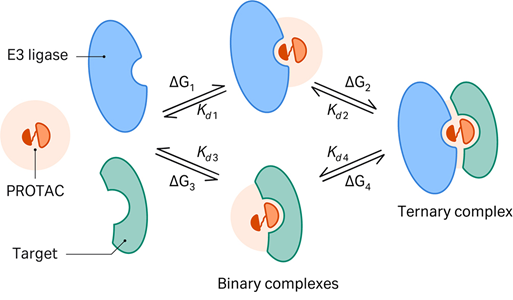
- Identification and characterization of new, potent, and selective ligands that bind and reprogram E3 ligase substrate specificity with our ligand binding assay
- Development, characterization, and validation of the warhead end of novel PROTACs
- Sensitive quantitation of PROTAC-mediated degradation of targets for DC50 and Dmax values
- Evaluation of the impact of target degraders on efficacy and safety-related translational biomarkers with our automatic western blot, IHC and other platforms
- Characterization PROTAC selectivity across the proteome and provide a global readout on changes in protein expression using protein microarray, such as RPPA
- We are able to provide off-the-shelf assays, including: CRBN, BET-VHL binding assay, VHL and CRBN ternary complex formation assay.
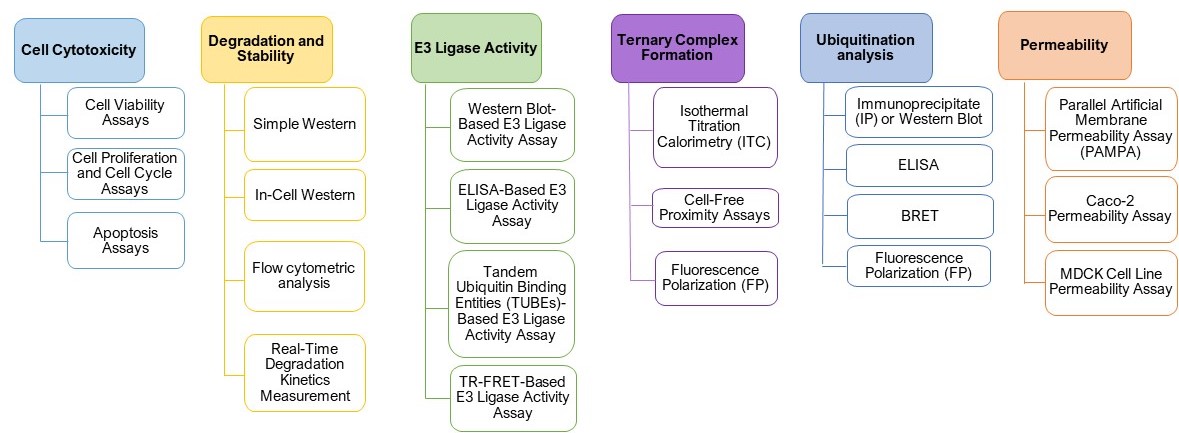
Example Data
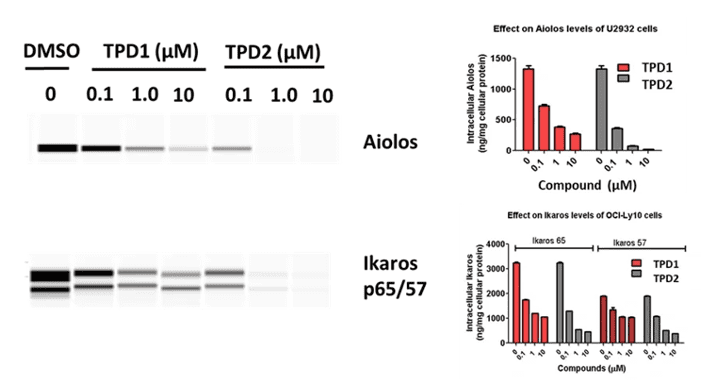
Example 1: Simple Western to quantify IKZF1/3 degradation in human lymphoma cells treated with a molecular glue compound
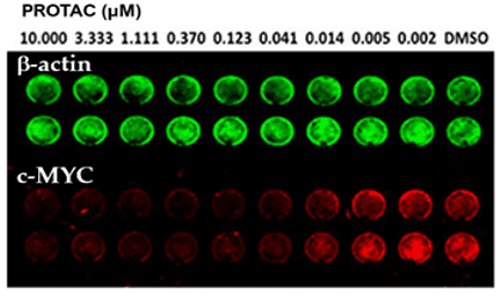
Example 2: In-Cell Western to quantify c-MYC degradation in MV-4-11 leukemia cells treated with a PROTAC compound
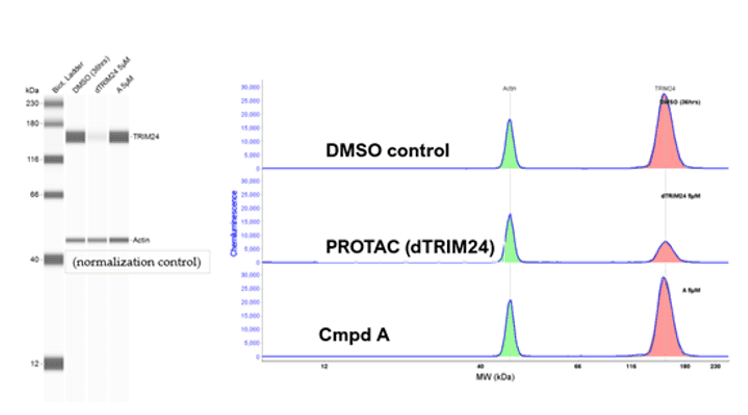
Example 3: Simple Western to quantify TRIM24 degradation in MCF-7 human breast cancer cells treated with a PROTAC compound
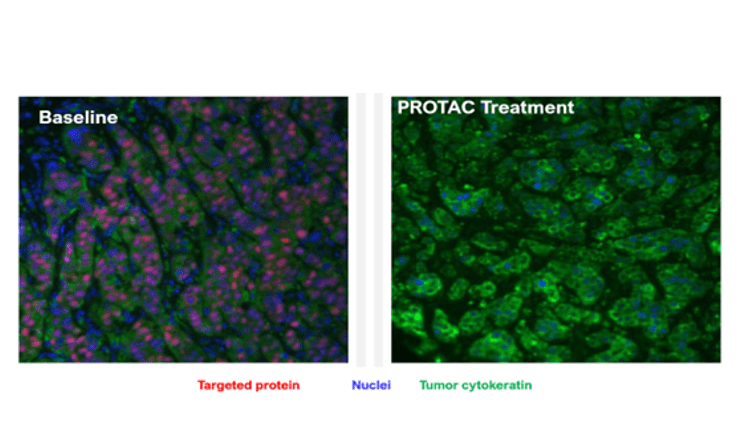
Example 4: IHC staining of protein degradation in tumor tissues from a xenograft model
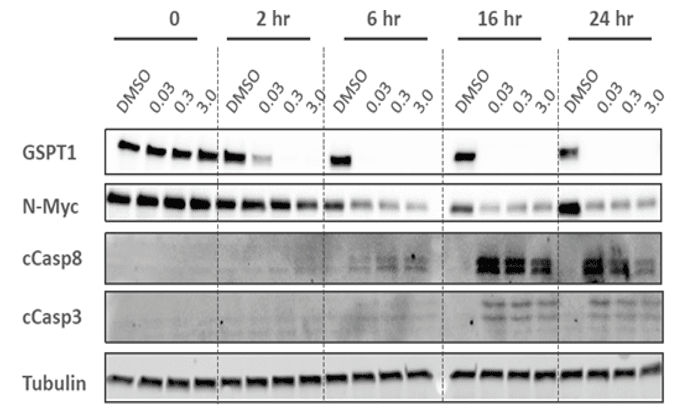
Example 5: Traditional western blot to examine time kinetics of GSPT1 degradation and caspase activation in cancer cells treated with a molecular glue compound
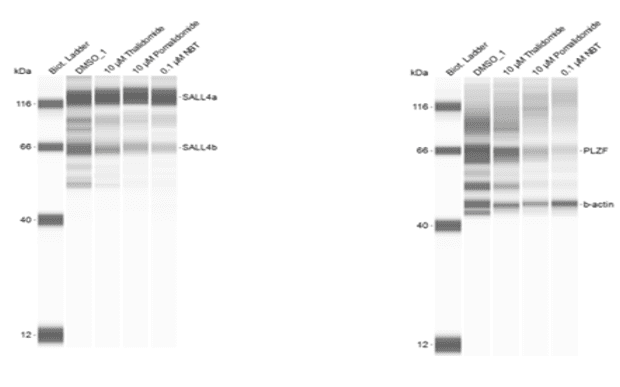
Example 6: Simple Western to quantify SALL4 and PLZF degradation in induced pluripotent stem cells (iPSCs) treated with a CRBN-binding molecular glue compounds. SALL4 and PLZF are two thalidomide-dependent cereblon neo-substrates and may be related to drug-induced teratogenicity.
